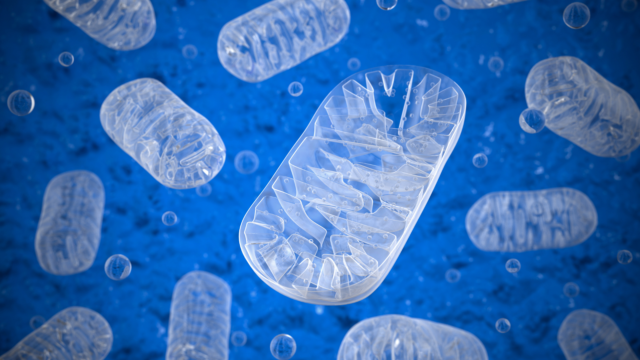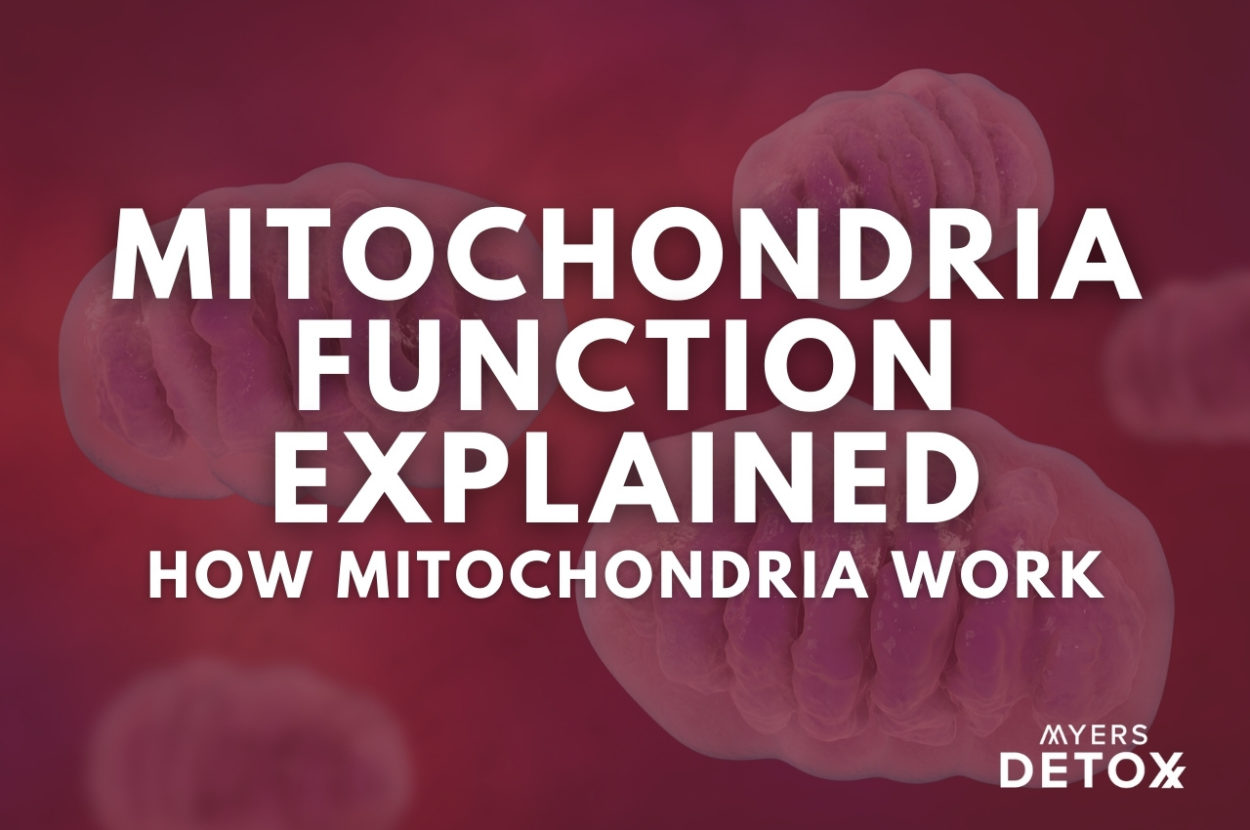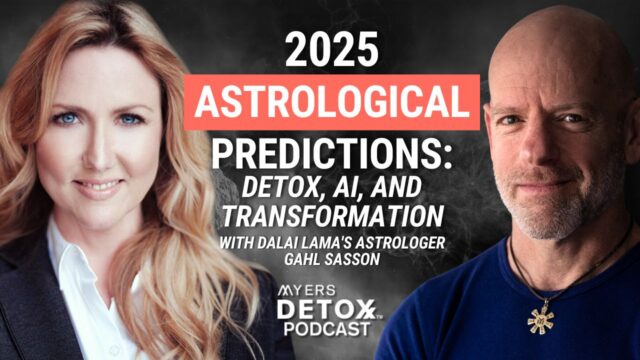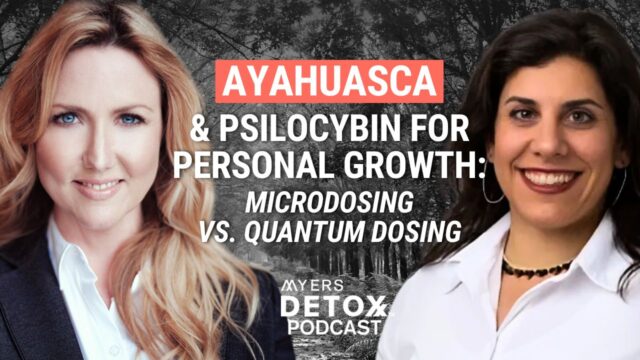There’s been a lot of buzz about mitochondria lately and the importance of keeping these microscopic cell parts healthy and happy. However, when you ask the average person what a mitochondrion is and how it functions, you’ll likely hear crickets.
In this article, you’ll learn:
- What are mitochondria?
- How these powerhouses do their job
- The most dangerous threat to your mitochondria — that you likely come into contact with every day.
- The one vital step you must take to ensure the health of your mitochondria
What Are Mitochondria?
You can think of mitochondria as the batteries that power up your cells, and therefore, your body. Mitochondria live in your cells and are one of the “organelles” that your cells require to function. If your body needs its organs (heart, liver, kidneys, and so on) to function, your cells need organelles — subcompartments of the cell that help to give it life.
These small organelles are known as the “powerhouse” of your cells, as around 90% of the chemical energy your body produces comes from the mitochondria.
From where do mitochondria get their energy-producing substrates? When you eat fat, carbs, and protein, it’s the mitochondria in your cells that turn these macronutrients into energy that can then go on to fuel other metabolic processes.
Put simply, mitochondria are the energy factories of your cells, and when they aren’t working properly, your body can’t carry out its essential functions optimally[1].

How Do Mitochondria Work?
One of the most crucial nutrients that mitochondria need in order to function properly is oxygen. In your body, oxygen flows through your blood and is delivered to your cells for a process called “oxidative phosphorylation.”
Without getting overly sciency, oxidative phosphorylation is a metabolic pathway by which your cells use enzymes to break down the nutrients you get from food (carbs, fats, protein), and thereby releasing the stored energy within. This process takes place within your mitochondria, and oxygen plays a vital role in transforming nutrients into energy. Therefore, when oxygen is low, energy production is altered[2].
Beyond their essential role in energy production, your mitochondria carry out a handful of other processes in your body. These include:
Calcium Homeostasis
Recent research suggests that the flow of calcium in and out of your cells’ mitochondria may play a crucial role in the function of your heart cells. Furthermore, it appears that dysregulated levels of mitochondrial calcium may impact the survival of cancer cells[3].
Innate Immunity
Your innate immune response is your first-line defense against foreign invaders. As opposed to adaptive immunity, which kicks in after the innate response and is more targeted, innate immunity jumps into action almost immediately after an unwanted substance is detected in your body.
Your mitochondria play a role in innate immunity by producing a protein called Mitochondrial Antiviral Signalling Protein (MAVS). When MAVS is activated, it signals virally infected cells to release cytokines (inflammatory messengers) which induce an immune response by your body to kill the virally infected cells — clearing the virus from your body[4].
Apoptosis
Apoptosis, also known as programmed cell death, is a highly regulated process by which your body rids itself of old, damaged, or unwanted cells. Once cell death occurs, phagocytic cells come along and engulf the apoptotic bodies and clear them from your body.
Your mitochondria play a role in apoptosis by signaling the activation of apoptosis within the cell. If your mitochondria sense a disturbance to the cell due to infection, nutrient deprivation, or lack of oxygen, they can release proteins which signal that the cell is no longer healthy, and therefore, it’s time to activate apoptosis[5].
Stem Cell Regulation
Stem cells are the raw material for your body. They are unspecialized, but they serve as a base from which specialized cells can develop from. In this way, stem cells have the potential to develop into many different types of cells in your body. Primarily, they serve as a repair system for your body.
Research suggests that although stem cells aren’t known for having an abundance of mitochondria, they are still significantly impacted by mitochondria function. In fact, the activation of stem cells, whether they survive, and when and how they finally deteriorate are thought to be strongly correlated with mitochondria activity[6].
Mitochondrial Dysfunction
When your mitochondria become damaged, the first thing you’ll notice is a drop in energy. Many people complain of low energy, fatigue, brain fog, and other symptoms associated with an inability to extract energy from the food they eat properly.
When your mitochondria are unable to carry out their functions, your body loses energy and the oxygen, which is so crucial for your mitochondria to procure energy, begins to build up. As a result, oxidative damage may occur, and a host of health issues can present[7].
So, what causes mitochondrial dysfunction in the first place?
One of the most significant contributors to mitochondrial damage is heavy metals. In fact, your mitochondria, like magnets, become targets for heavy metals once ingested[8]. Research shows that when heavy metals interact with your mitochondria, damaging events can occur, such as[8][9]:
- The formation of reactive oxygen species, which creates oxidative damage in your mitochondria.
- The interference of oxidative phosphorylation, resulting in an inability for your cells to produce energy.
- Disruption in the mitochondrial membrane potential, which is vital for storing energy.
- Damage to mitochondrial enzymes.
- The induction of cell death, apoptosis.
Where Do Heavy Metals Come From?
Unfortunately, avoiding heavy metal exposure is becoming more and more challenging as the contamination in our environment continues to increase.
Heavy metals can be found ubiquitous in our environment, from personal care products to the food you eat and water you drink. Here’s a list of the most common places you might be exposed to heavy metals[9]:
- Food that’s grown in soils that are contaminated
- Seafood that’s been swimming in contaminated waters, eating other contaminated fish, marine life
- Paint in older homes
- Pharmaceutical medications
- Air
- Unfiltered water
- Personal care products like deodorant and makeup
How To Support Your Mitochondria And Defend Against Heavy Metals
Supporting your body’s natural detox mechanisms so that it may clear heavy metals is the number one thing you can do to support your cells and enhance your defenses against mitochondrial damage.
As previously mentioned, avoiding heavy metals isn’t as easy as it may seem, so in addition to being cautious about your exposure, it’s crucial that you find ways to support the detox of these metals from your body.
When doing so metals, it’s vital that you take into account a two-step process. Step one is naturally liberating metals from your tissues and cells. To do this, you must incorporate nutrients into your diet that can bind metals and efficiently assist in pulling them from the cells in which they’re lodged.
Step two is supporting your body as it mobilizes the metals out of your body, effectively escorting them out of your system, so they don’t find a way to re-lodge themselves into your tissues.
It may sound overwhelming, and if you don’t know what you’re doing, it can be. However, I created a Mitochondria Detox Kit to take the guesswork out of the process and provide you with everything you need to successfully support the detox of your mitochondria and liberate your cells from the damage of environmental pollutants.
The Mitochondria Detox Kit includes:
- The Mitochondria Detox One Page Supplementation Guide
- The Mitochondria Detox Printed Instruction Manual (sent with your order)
- The Mitochondria Detox Ebook Digital Download
- CitriCleanse: Universal Metal and Chemical Binder
- Ageless AF: Advanced Metal Mobilizer
The grapefruit citrus pectin in CitriCleanse is amazingly effective at aiding your body’s innate ability to mobilize and excrete impurities polluting your body, thus assisting your body in the clearance of these harmful compounds. In addition, the formula includes fulvic and humic acids, which flood your body with minerals, and cilantro, which helps to mobilize the liberated metals.
Ageless AF includes a special kind of silica, orthosilicic acid (OSA), the most bioavailable, highest absorbing form of silica. OSA assists your body in mobilizing the toxins you’ve liberated and helps to clear them naturally. In addition, keeping your silica levels in balance with OSA can help to prevent the lodging of future metals into your tissues.
The combination of these two supplements provides everything you need to support your body’s natural removal of toxins from your cells and support the health of your mitochondria.
Takeaway
Your mitochondria are the mighty organelles that power up your cells and keep the energy flowing throughout your entire body. Every bite of food you eat needs to make its way through your mitochondria before it can become the chemical energy that fuels your day.
Beyond energy production, however, your mitochondria play vital roles in programmed cell death (apoptosis), immunity, calcium homeostasis, and stem cell function.
Keeping your mitochondria happy and healthy is crucial for overall health and wellness. When these cell parts become damaged or weak, your entire body takes a hit. Therefore, being aware of what may be stealing energy away from your mitochondria is exceedingly important. The number one culprit? Heavy metals.
Care for and protect your mitochondria by supporting your body’s ability to detox heavy metals and clear them from your system. If you want step-by-step guidance for mitochondria detox, check out my Mitochondria Detox Kit for a simple and highly effective way to start reclaiming your cellular energy today.
**These statements have not been reviewed by the FDA. The Mitochondria Detox Protocol is not designed to treat, cure, or prevent any disease. It is not intended to replace any medication or healing modality prescribed by your medical doctor.









